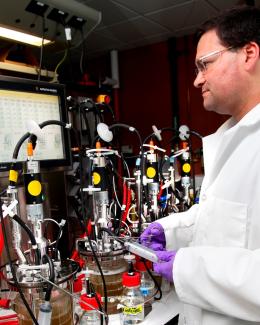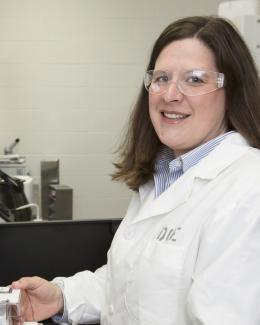Abstract
Abstract
BACKGROUND:
Clostridium thermocellum is a promising consolidated bioprocessing candidate organism capable of directly converting lignocellulosic biomass to ethanol. Current ethanol yields, productivities, and growth inhibitions are industrial deployment impediments for commodity fuel production by this bacterium. Redox imbalance under certain conditions and in engineered strains may contribute to incomplete substrate utilization and may direct fermentation products to undesirable overflow metabolites. Towards a better understanding of redox metabolism in C. thermocellum, we established continuous growth conditions and analyzed global gene expression during addition of two stress chemicals (methyl viologen and hydrogen peroxide) which changed the fermentation redox potential.
RESULTS:
The addition of methyl viologen to C. thermocellum DSM 1313 chemostat cultures caused an increase in ethanol and lactate yields. A lower fermenter redox potential was observed in response to methyl viologen exposure, which correlated with a decrease in cell yield and significant differential expression of 123 genes (log2 > 1.5 or log2 < -1.5, with a 5 % false discovery rate). Expression levels decreased in four main redox-active systems during methyl viologen exposure; the [NiFe] hydrogenase, sulfate transport and metabolism, ammonia assimilation (GS-GOGAT), and porphyrin/siroheme biosynthesis. Genes encoding sulfate transport and reduction and porphyrin/siroheme biosynthesis are co-located immediately downstream of a putative iscR regulatory gene, which may be a cis-regulatory element controlling expression of these genes. Other genes showing differential expression during methyl viologen exposure included transporters and transposases.
CONCLUSIONS:
The differential expression results from this study support a role for C. thermocellum genes for sulfate transport/reduction, glutamate synthase-glutamine synthetase (the GS-GOGAT system), and porphyrin biosynthesis being involved in redox metabolism and homeostasis. This global profiling study provides gene targets for future studies to elucidate the relative contributions of prospective pathways for co-factor pool re-oxidation and C. thermocellum redox homeostasis.




